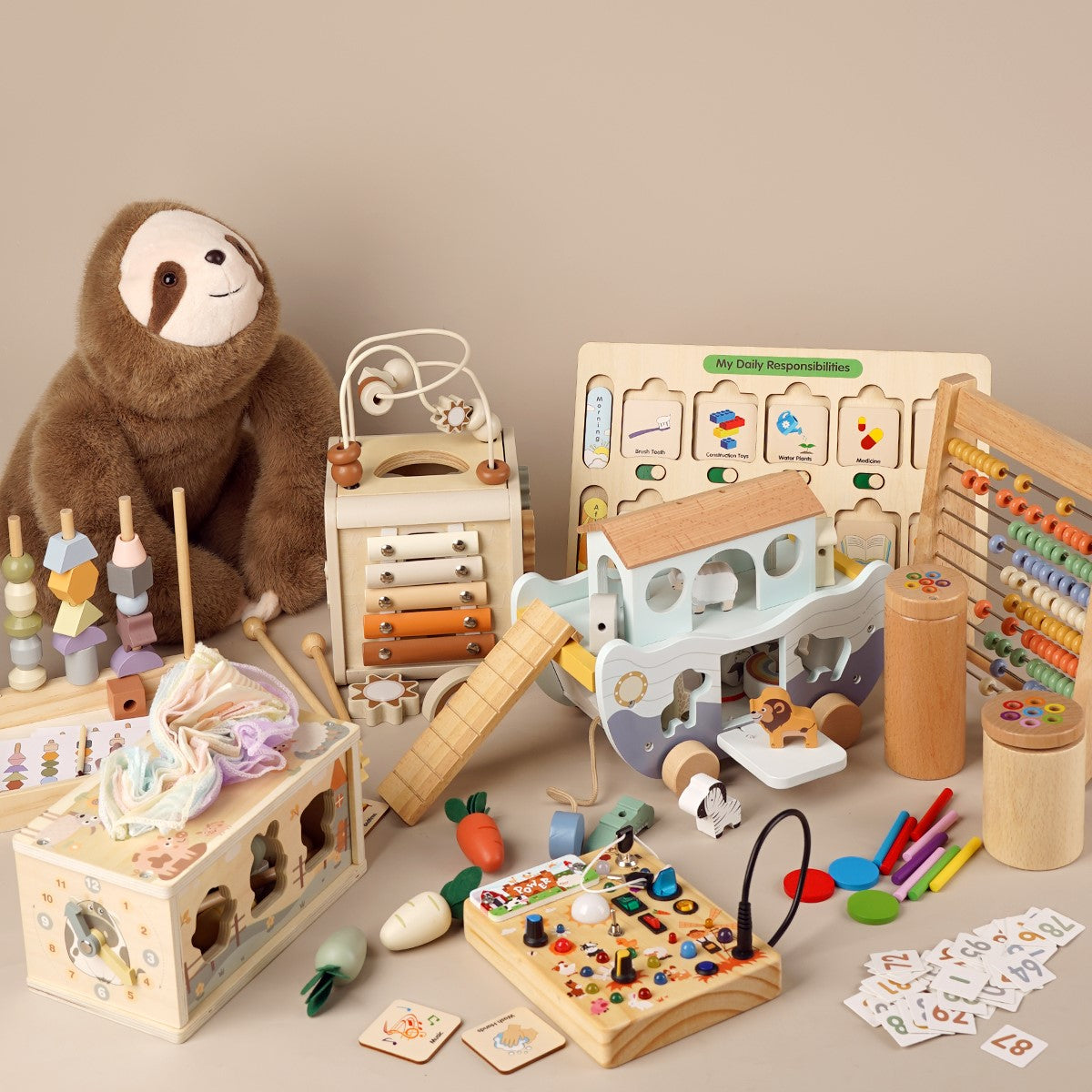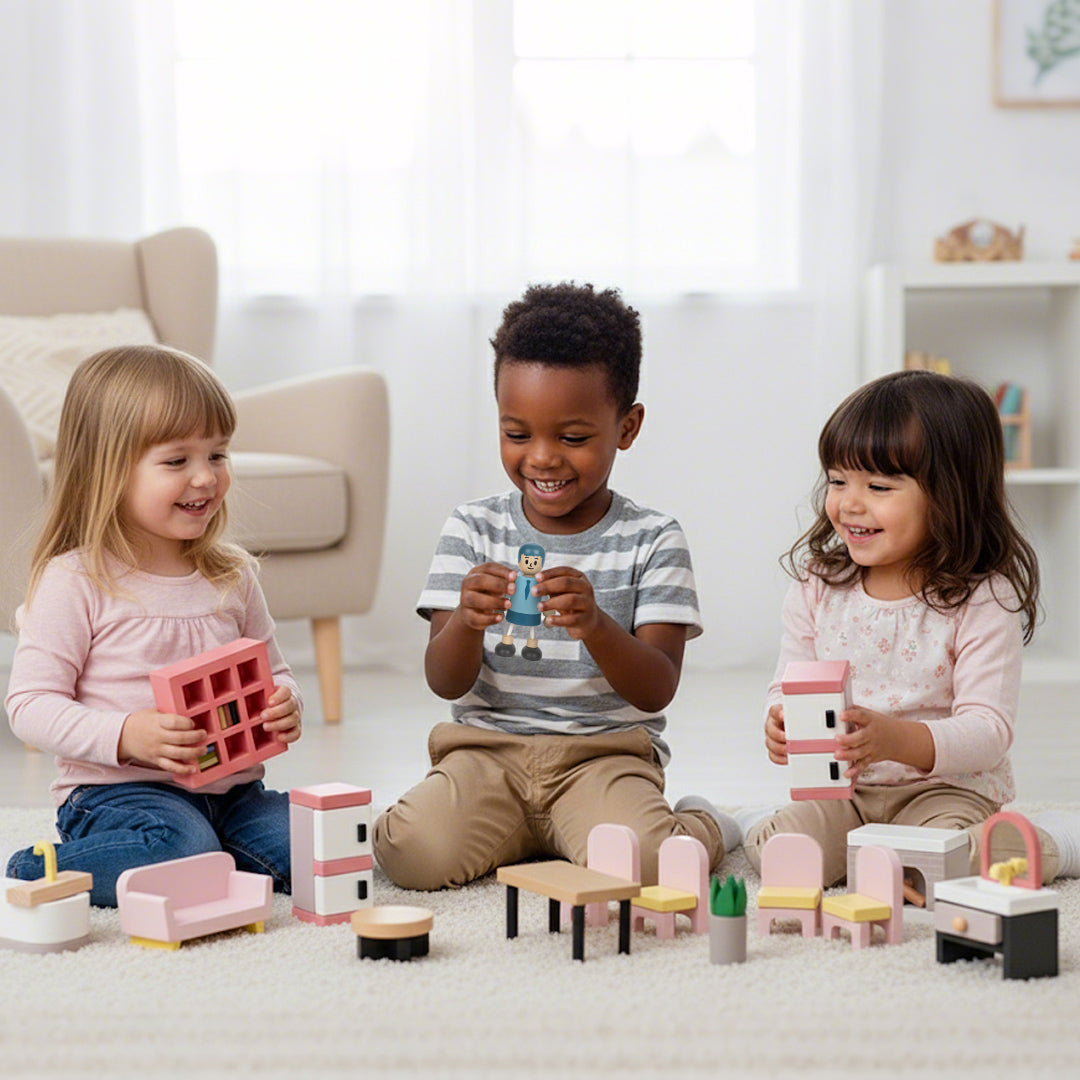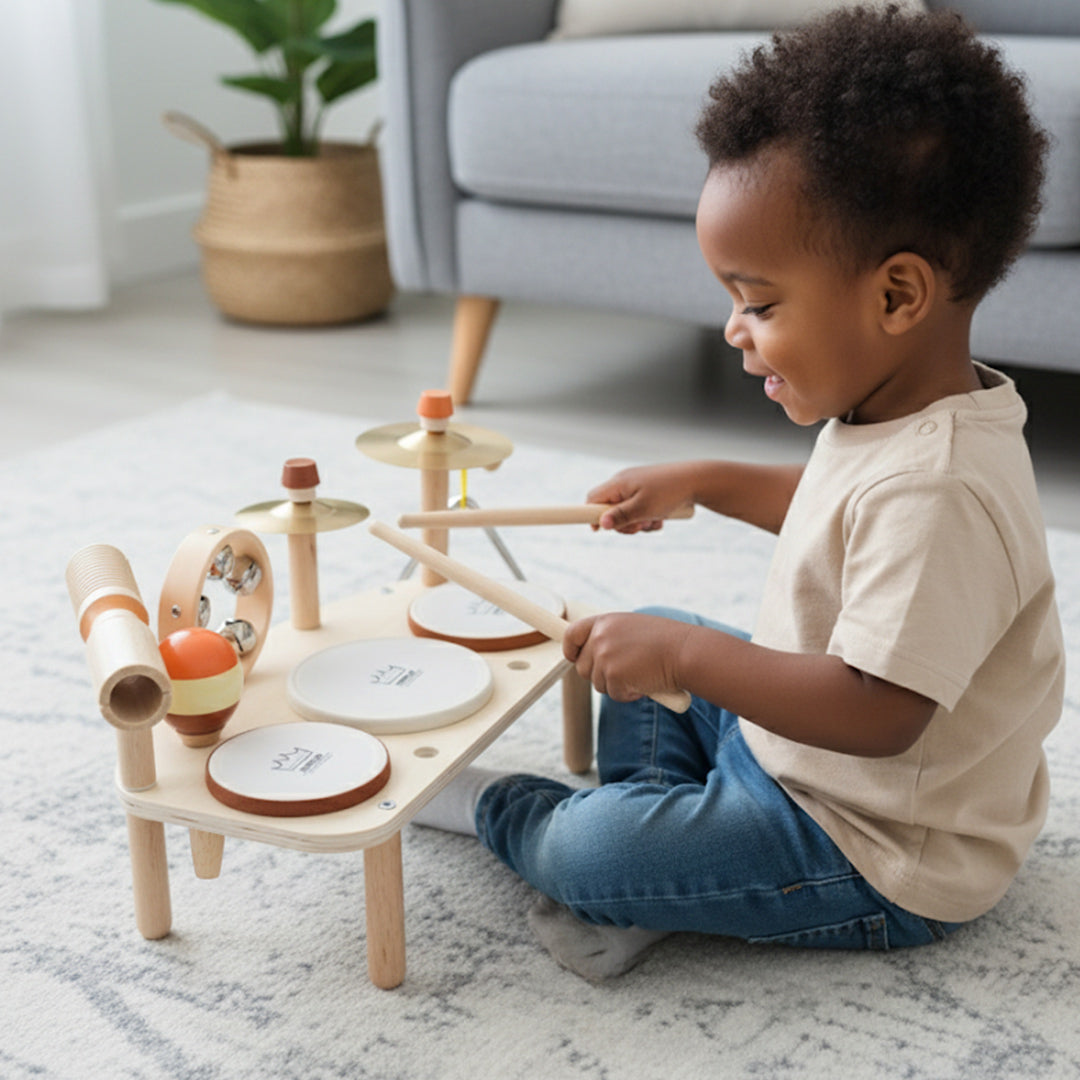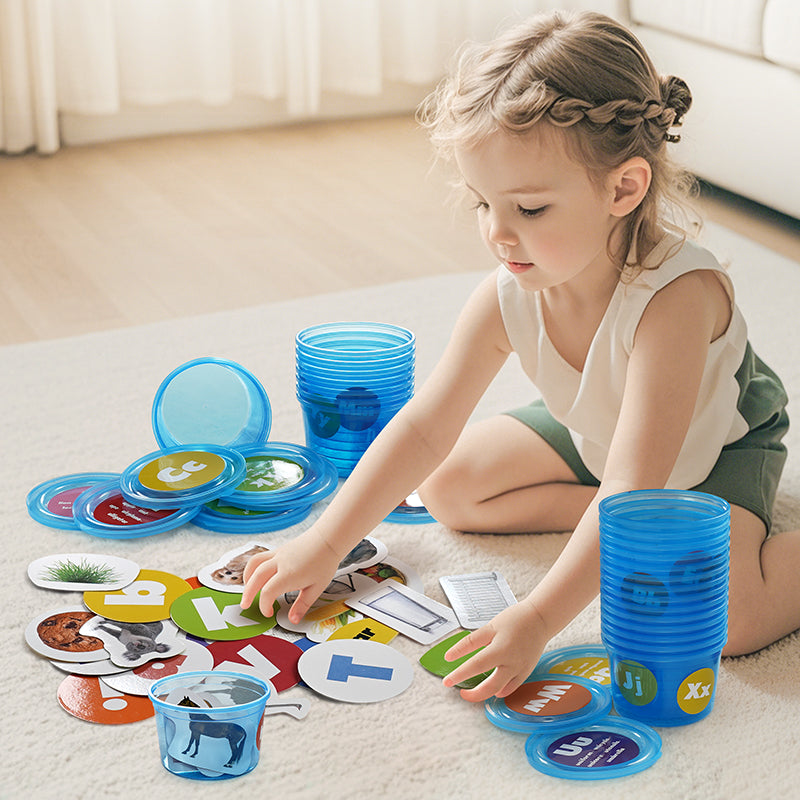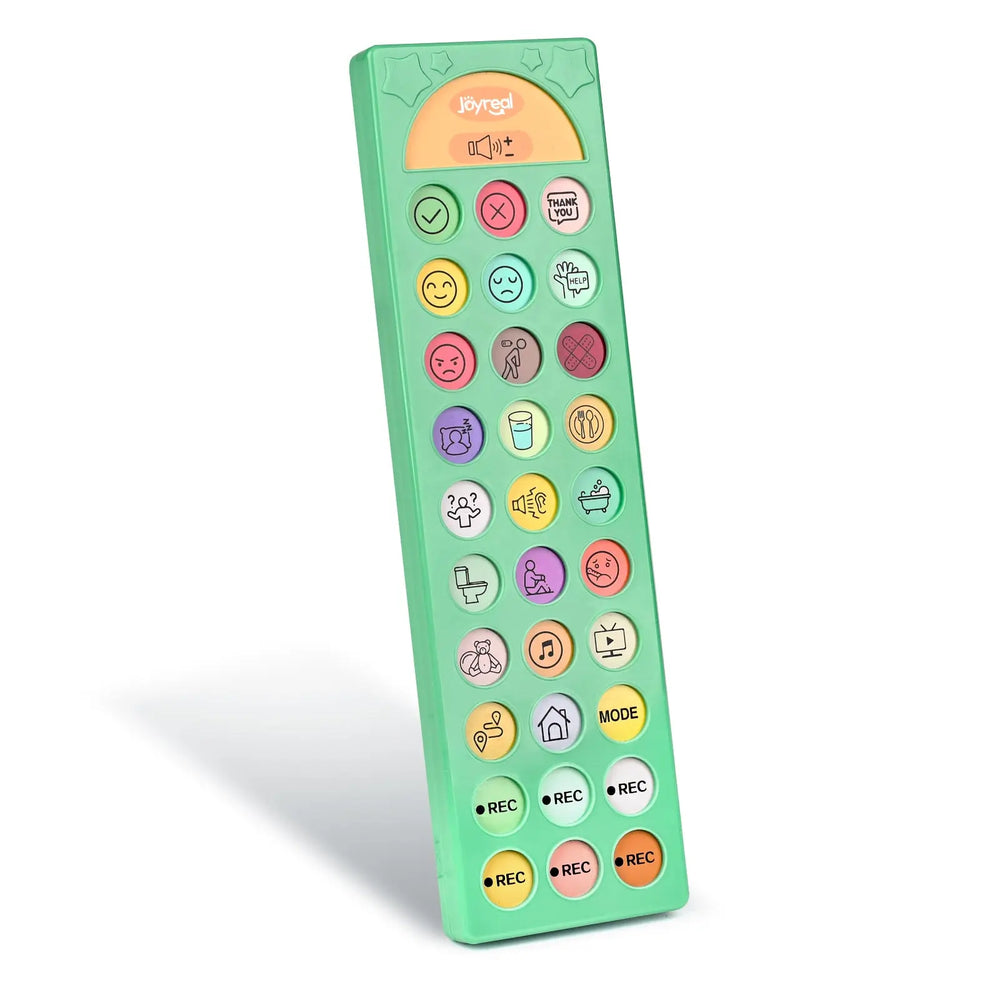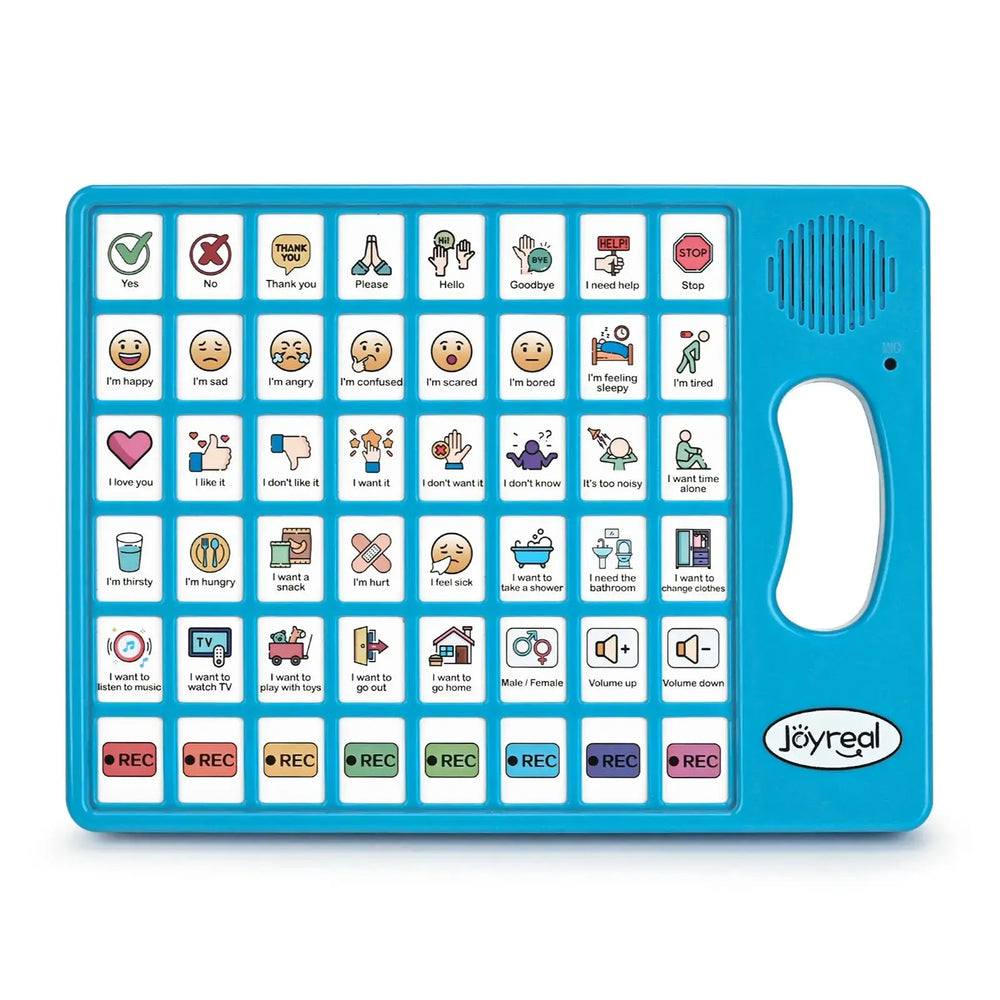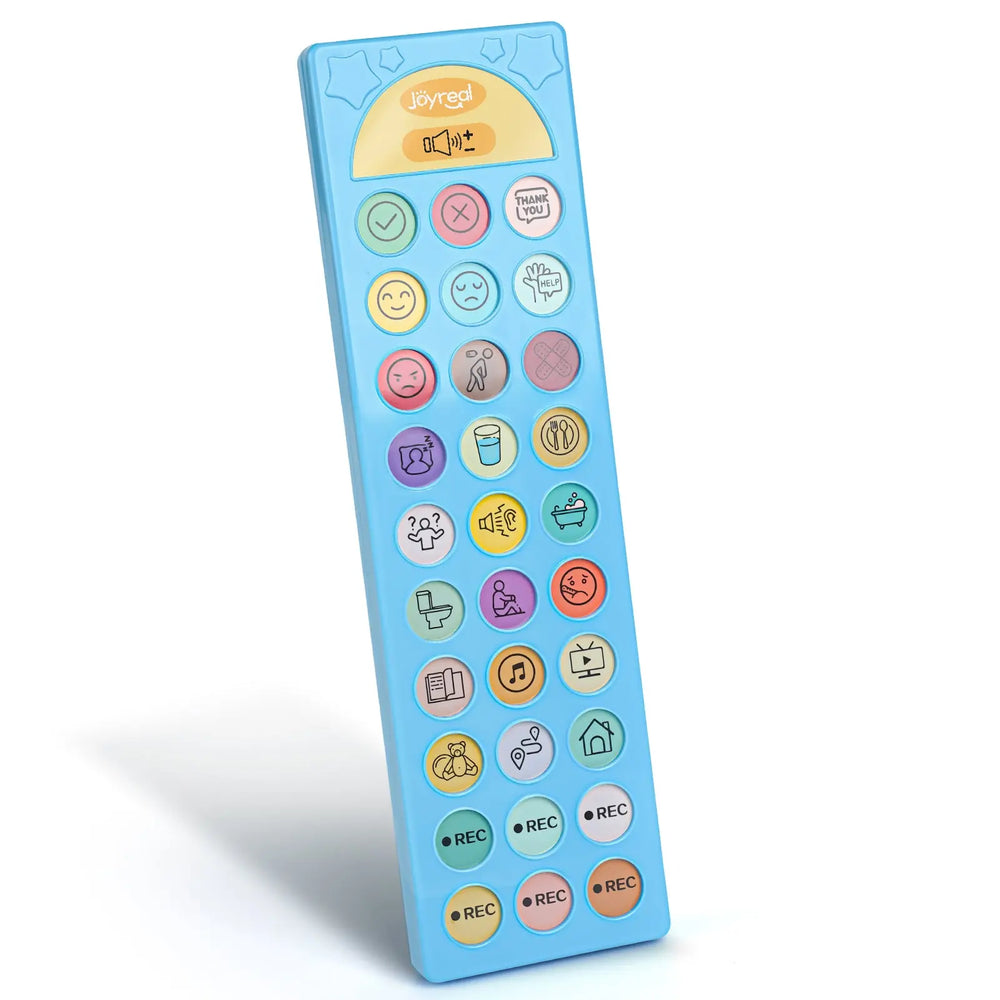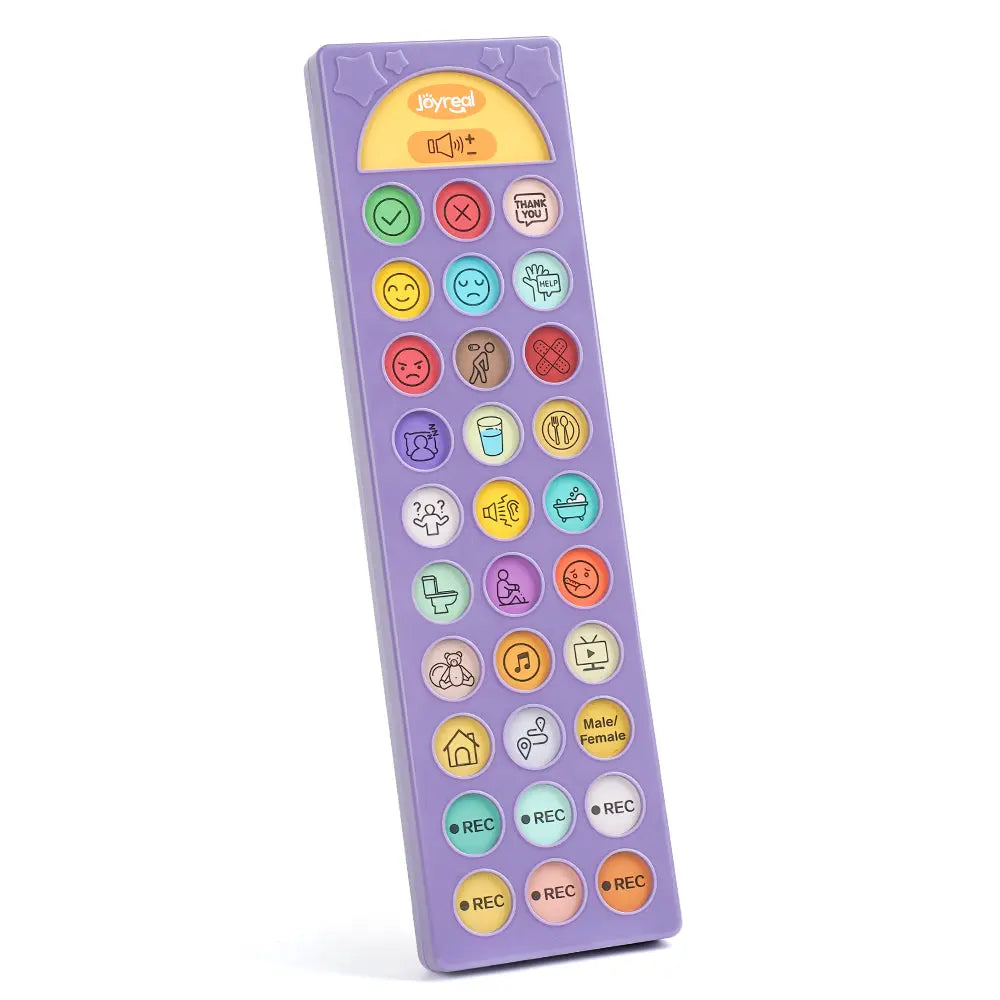What AAC Devices Support Bilingual Families with Autism?
In today’s diverse world, communication is more than just words—it’s a lifeline that connects people, improves care, and fosters independence. For individuals who struggle with speech due to autism, neurological conditions, or physical disabilities, AAC Communication Devices (Augmentative and Alternative Communication devices) are essential.
Among these tools, Spanish and bilingual AAC communication boards play a unique role. They help bridge language barriers, allowing Spanish-speaking users and bilingual families to communicate effectively in healthcare, education, and daily life.
This article explores why bilingual AAC boards are important, how they work, and why products like the Joyreal Spanish & English Language AAC Communication Board
are transforming communication for bilingual households.

Common Scenarios Where Bilingual AAC Boards Are Needed
Medical Settings (Hospitals, Clinics, Emergency Care)
In healthcare environments, communication can literally save lives. Spanish-speaking patients with speech challenges may struggle to describe pain levels, symptoms, or medication needs. A bilingual AAC board ensures doctors and nurses clearly understand patient requests, reducing medical risks and errors.
Schools and Special Education Classrooms
For children with communication difficulties, language is a barrier to learning. A Spanish-English AAC communication board allows teachers to support bilingual students, encouraging active participation in lessons and peer interaction. This is especially valuable in dual-language programs or schools with high populations of Spanish-speaking families.
Home Care and Family Support
Families often face stress when a loved one cannot communicate. A bilingual AAC board bridges the gap, enabling family members to understand needs without guessing or misinterpreting signals. In bilingual households, switching between Spanish and English builds stronger family bonds and smoother daily routines.
Key Features of an Effective Spanish-English AAC Board
- Core Vocabulary Selection
An effective bilingual AAC board should include essential daily phrases such as “I need help,” “I’m hungry,” or “It hurts,” in both Spanish and English. This helps users express their most urgent needs without delay.
- Visual Aids, Icons, and Symbols
Pictures and universally recognized icons reduce reliance on text. This makes AAC boards more accessible for children, individuals with limited literacy, or users with cognitive impairments.
- Clear Bilingual Labeling
Each word or phrase should be labeled in both Spanish and English side by side. This allows caregivers who speak different languages to communicate effectively with the same tool.
- Portability and Durability
For practical use, boards should be lightweight, sturdy, and easy to clean. Families and professionals often prefer laminated boards or digital apps that can withstand daily use.
👉 A great example is the Joyreal Spanish Language AAC devices for autism. It's specifically designed to support bilingual families, allowing seamless language switching between Spanish and English. Its simple layout, durable design, and core vocabulary make it a practical choice for both home and professional settings.
How to Choose the Right Bilingual AAC Board
- Assessing the User’s Needs
Every user is unique. A child in school may need academic vocabulary, while an adult recovering from surgery may need medical terms. The right AAC board should be tailored to the user’s environment.
- Considering Age and Cognitive Abilities
Younger children may benefit from boards with larger images and fewer words, while older users may prefer more vocabulary options.
- Training and Caregiver Support
Introducing an AAC board requires training. Caregivers, teachers, and healthcare staff should be comfortable using it alongside the user.
- Budget and Accessibility
While high-tech devices can be powerful, they are costly. Low-tech bilingual boards, like Joyreal’s, provide an affordable and effective alternative for families and schools.
Designing a Spanish and Bilingual AAC Board
Selecting Essential Phrases in Spanish and English
The most effective boards include high-frequency words and everyday expressions. Examples:
- Spanish: “Tengo dolor” (I have pain), “Quiero comer” (I want to eat).
- English: “I’m tired,” “I need the bathroom.”
Using Visual Context for Universal Understanding
Symbols such as a food plate, bathroom sign, or sad face allow even non-literate users to communicate successfully.
Testing with Real Users
A bilingual AAC board should always be tested in real-life scenarios with feedback from the user and caregivers.
Challenges in Bilingual AAC Implementation and How Joyreal Provides Solutions
1. Dialect Differences in Spanish
Spanish is a rich language with many regional variations. A word that works in Mexico may not mean the same in Spain or Argentina. This creates a challenge when creating a standardized AAC board.
✅ Joyreal’s Solution:
Joyreal uses core universal Spanish vocabulary—words and phrases that are widely understood across different regions. For bilingual families, this ensures that essential needs like food, pain, or emotions are communicated clearly, no matter the dialect.
2. Limited Availability of Bilingual AAC Tools
Most AAC communication devices on the market are designed primarily in English. Spanish-English options are rare, and custom bilingual solutions are often expensive.
✅ Joyreal’s Solution:
The Joyreal AAC board is an affordable, ready-to-use tool specifically created for bilingual families. It eliminates the need for costly custom boards while still offering essential Spanish and English vocabulary for everyday use.
3. Cultural Barriers and Stigma
In some communities, there may be hesitation to use AAC devices due to cultural beliefs about disability or communication challenges. Families may fear that AAC use could delay speech development.
✅ Joyreal’s Solution:
The Joyreal board is simple, non-intimidating, and family-friendly. Its lightweight, picture-based design makes it easy for children, adults, teachers, and caregivers to adopt. Because it’s a low-tech board, it feels less clinical and more natural, helping families embrace AAC as a positive support tool.
4. Accessibility and Training
High-tech AAC devices can be difficult for families to afford, and they often require extensive training. Many caregivers need a tool that works immediately without weeks of learning.
✅ Joyreal’s Solution:
The Joyreal Spanish & English AAC board is plug-and-play—no batteries, no apps, no tech setup required. Caregivers can use it right away with zero training. Its bilingual labeling also helps both English- and Spanish-speaking caregivers communicate without confusion.
5. Portability in Daily Use
Some AAC devices are bulky, fragile, or limited to classroom or clinical environments. Families need a tool that can travel easily from school to home to hospital.
✅ Joyreal’s Solution:
Joyreal designed its AAC board to be lightweight, durable, and portable. Families can carry it anywhere—parks, restaurants, hospitals—so that children and adults always have a reliable way to express needs.

Case Studies
- Healthcare: A Spanish-speaking stroke survivor communicated pain levels clearly using a bilingual AAC board, improving treatment accuracy.
- Education: A child with autism participated fully in class activities thanks to an AAC device for autism with bilingual features.
- Home Care: A bilingual grandmother with ALS expressed needs more independently with Joyreal’s Spanish-English AAC board.
Conclusion
AAC Communication Devices are not just tools—they’re bridges that give people with communication challenges independence, dignity, and a voice. For Spanish-speaking families, the need for bilingual AAC communication boards is growing rapidly in schools, hospitals, and homes.
Affordable, effective, and designed with real users in mind, the Joyreal Spanish & English Language AAC Communication Board is one of the best options available for families seeking an easy-to-use solution that serves both English and Spanish speakers.
By embracing bilingual AAC solutions, we move toward a more inclusive world where every voice is heard, respected, and understood—whether in English, Spanish, or both.
FAQs
Q1: Who benefits most from bilingual AAC boards?
- Spanish-speaking individuals with speech challenges, especially in bilingual families.
Q2: Can one AAC device support multiple languages?
- Yes, many high-tech AAC communication devices and Joyreal’s board support bilingual use.
Q3: Are digital AAC devices better than paper-based?
- Not always—digital boards are flexible, but low-tech boards are durable, affordable, and reliable.
Q4: What are the best AAC devices for autism?
- It depends on the child’s needs. For bilingual households, the Joyreal Spanish & English Language AAC Communication Board is an excellent choice.
Q5: Do families need training?
- Yes. Caregivers and teachers should learn how to introduce the AAC board consistently.
Q6: How do AAC boards promote inclusivity?
- They give Spanish-speaking users equal opportunities to express themselves in healthcare, school, and family life.
Maybe it will be helpful for you:
Recent Post

How to Make DIY Printable Communication Boards
Communication is at the heart of every child’s development — and fo...

Top 5 Christmas Gifts That Bring Families Closer (2025 Guide)
Christmas isn’t just about the gifts — it’s about the moments we c...

Top Musical Christmas Gifts for Toddlers & Preschoolers 2025
Why Musical Gifts Are Perfect for Toddlers and Preschoolers Music h...

Joyreal AAC Devices Wholesale Partner
In today’s educational and therapeutic environments, speech therapi...

Joyreal AAC Device – Big Sale for Autism & Speech
Every Voice Deserves to Be Heard Imagine your child looking up at y...

How to Choose Safe & Educational Toys for Christmas 2025
When “Just a Toy” Means So Much More If you’re a parent, you know t...

Speech Delay or Autism or Aphasia? Know the Signs
Aphasia vs. Speech Delay vs. Autism: Understanding the Differences ...

Unique Christmas Gifts for Kids Who Already Have Everything (2025 Edition)
Cracking the Code of Gifting for Kids Who “Have It All” If you’ve e...

Best Christmas Gifts for Toddlers & Preschoolers Under 5
When your child opens a present on Christmas morning, what really l...

How to Teach ABA Therapy at Home: A Gentle Step-by-Step Guide for Parents
What is ABA Therapy and Why It Works at Home Applied Behavior Analy...
